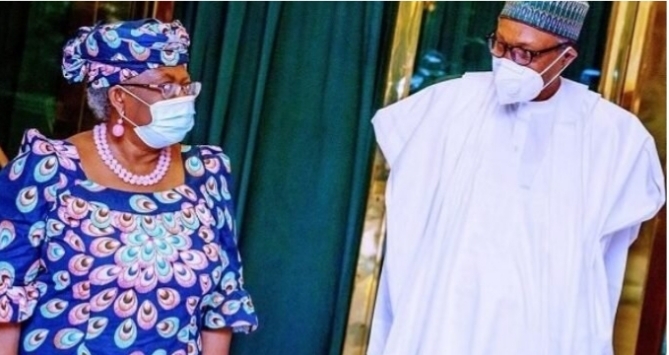Chairman of the board of Gavi, the Vaccine Alliance, Ngozi Okonjo-Iweala has assured that Nigeria and other African countries will have access to COVID-19 vaccines from the end of January, 2021.
This statement was made by the former minister, Okonjo-Iweala on Wednesday during a meeting with the foreign affairs minister, Geoffrey Onyeama.
“As long as one person has it in the world, no one is safe. And that is why poorer countries, lower-middle-income countries like Nigeria, need to get it as quickly as possible”, she was quoted as saying.
Okonjo-Iweala is currently the African Union special envoy on mobilising international economic support for the continental fight against COVID-19 and Nigeria’s candidate for the World Trade Organisation director-general position.
She explained that there is an ongoing international initiative involving the World Health Organisation, the Coalition for Epidemic Preparedness Innovations (CEPI), GAVI and the international community, to get vaccines delivered to developing and poorer countries, in an affordable manner and quickly.
According to her, the Pfizer vaccine and the AstraZeneca were presently being negotiated so that poor countries don’t have to stand in a queue behind rich countries.
The former finance minister described Africans as blessed, for not having the same incidence rate of COVID-19 like other continents, but warned African nations against complacency.
Okonjo-Iweala said a platform called the COVAX facility had been developed with 186 countries onboard to raise resources and get the vaccines to poor countries quickly.
“So, the Pfizer vaccine, the AstraZeneca, those are being negotiated now so that poor countries don’t have to stand in line behind rich countries,” she explained.
“So, we hope they are starting by the end of January. We will be able to reach these countries, including most of the African countries, Nigeria included, will be able to get access to some of these vaccines.
“Initially, it will be for frontline health workers, followed by some other target groups – older people, those with underlying conditions and then, from there, the rest of the population. I think the COVAX facility can cover maybe 20-23 per cent of the population by the end of next year.”






Discussion about this post